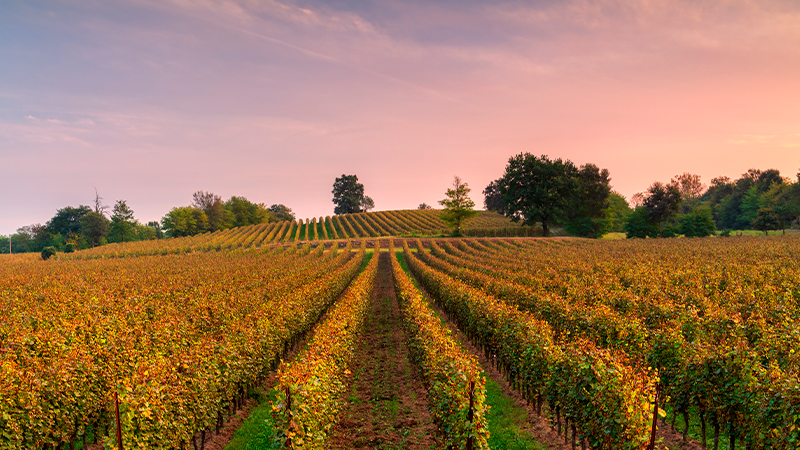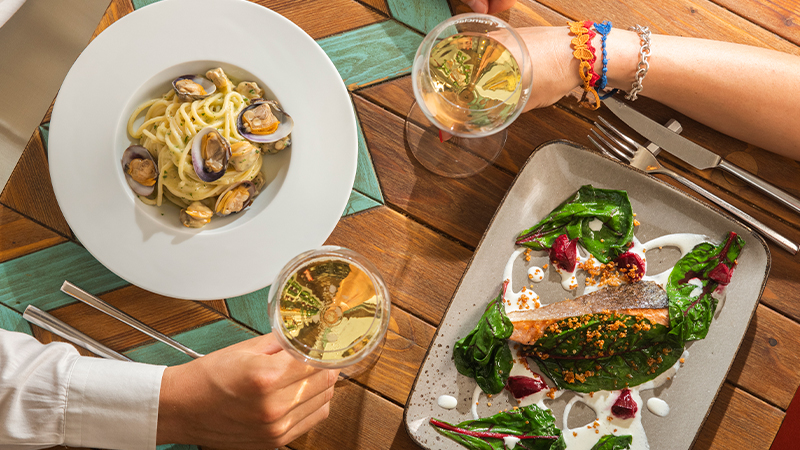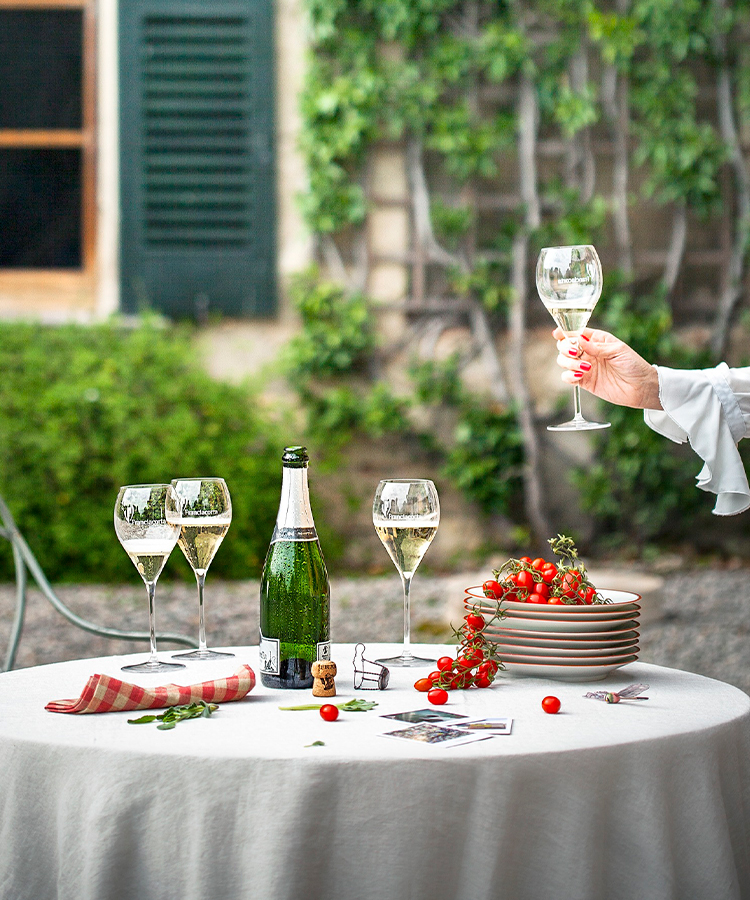
By now, you’re probably aware that good sparkling wine is not restricted to one specific area in the top right corner of France. Quality fizz has bubbled up everywhere from southern England to South Africa. Few places, though, possess the kind of history, pedigree, scenery, and built-in food culture as that of Franciacorta.
Franciacorta resides in the dramatic northern reaches of Italy, about an hour’s drive from the stately structures and fashion-forward minds of Milan. Here, tidy rows of Chardonnay, Pinot Nero, Pinot Bianco, Erbamat, and other grape varietals are framed by the majestic topography of the southern Alps. This is the land of Lake Iseo, of mineral-driven soils from ancient glaciers, of Rovato beef with fresh olive oil or sun-dried sardines. It’s also home to a sparkling wine scene, one that was officially awarded DOCG status in 1995 but was born many centuries prior, when the Cenomani and Romans occupied the land.
As early as 1570, locals were writing about the energetic effervescence of the wines. By the early 1800s, the Napoleonic Land Registry had certified some 1,000 hectares in Franciacorta, solidifying the place as a wine headquarters of sorts. The move set the table for what would become a famous export, bottled under cork and cage.
It’s no longer a secret — Franciacorta was the official sparkling wine of this year’s Emmys, after all — but that doesn’t mean the area is not teeming with treasures and fantastic finds. Thanks to the region’s wine-growing heritage and range of styles, there’s much to explore and thoroughly enjoy.

Method and Styles
An age-old method yields a singular streak of quality but also a host of different Franciacorta styles. The production protocol is stringent, but with tough rules come brilliant wines. Hand-harvested fruit is picked during a specific harvest window and fermented in the cellar once, and again in the bottle, in a very non-interventionist fashion. It’s an unhurried vinification process accented by extended lees contact, wherein the wine picks up texture and personality.
The region has five basic wine categories. The term “Franciacorta” refers to a wine made from the main four grapes (Chardonnay, Pinot Nero, Pinot Bianco, Erbamat) that’s aged at least 18 months on the lees and ferments a second time in the bottle. These straw-hued beauties show bread, citrus, and nutty notes. Satèn is a brut wine made from Chardonnay and Pinot Blanc that tends to be a bit more floral and delicate. Franciacorta Rosé gets its color from Pinot Nero (making up at least 35 percent of the blend) and offers ample structure and fresh berry flavors.
In addition, Millesimato refers to a wine that stresses vintage, with the lion’s share of the wine (85 percent) coming from a single growing season. If year-to-year variation is for you, this is your Franciacorta. Furthermore, Riserva is the best of the best, released no sooner than five and a half years after harvest. These intricate wines showcase the merits of age and maturation.
Dosage plays a key role in the differences of all of the above, essentially the amount of sugar added to the bottle to spark secondary fermentation. From least to most, or driest to sweetest in terms of finished wines, the terms are pas dosé, extra brut, brut, extra dry, sec, and demi-sec.
It should be noted that still wines are also made in the region, but in limited quantities and set aside primarily for local consumption. Locals continue to experiment with once-overlooked and indigenous grape varieties, such as Erbamat, which is enjoying a comeback these days. In fact, the slow-ripening white grape is now a key player in Franciacorta’s famous sparkling wines, allowed to be up to 10 percent of the blend.
Sustainability
If you care about wine, you care about land by default. Sustainability is a big deal in Franciacorta and the rising number of organically farmed outfits is proof. Growers adhere to tight regulations that are sensitive to the state of the land, and wineries use tools like carbon calculators to gauge and minimize emissions. There are few international denominations with such a steadfast commitment to both the environment and the evolution of the craft.
Begging for Food
Because the sparkling spectrum of Franciacorta is so broad, the region is about as nimble as they come in terms of food-friendliness. With a range of sweetness levels and varietal ratios, imbibers are treated to a family of bubbles that’s a welcome guest at the table, all the way from mid-afternoon appetizers to dessert, and all courses in between.
Franciacorta asks that you take sparkling wine out of its rigid special-occasions box. In the States, we drink the stuff at weddings and when the ball drops at Times Square. Alas, it’s time we learn from the good people of Brescia. There, it accompanies everything from whitefish and beef to fresh vegetables and cheese. It’s a surf-and-turf sparkler, set up for freshwater and saltwater proteins alike. Better, it navigates the Atlantic brilliantly, pairing well with both Italian and American cuisine.

Holiday-Ready
With the holidays approaching, Franciacorta brings a one-two punch that’s all kinds of favorable. As a bubbly wine, it’s festive and inherently fun. These are the well-made wines you not only deserve when Uncle Doug is on another uncomfortable rant but the kind you want to show off to your wine-curious friends and family members. As a wine with ample character, the right one can embrace and enhance holiday table favorites like baked ham, stuffed turkey, even beef tenderloin.
Extra dry Franciacorta forms a pristine partnership with the likes of spaghetti with clams or the inhabitants of your charcuterie board, from dry-cured ham and prosciutto to baked Belgian endive stuffed with gorgonzola and walnuts. Try a brut to take on the tomato in ravioli or to cut neatly into the decadence of Beef Wellington. Go pink and savor how Franciacorta rosé can bring balance to something warm and comforting, like gumbo or cioppino. See how a demi-sec can elevate the fruit flavors of a fresh tart or temper the rich and earthy tones of pumpkin pie.
For every plate, festive or otherwise, there’s a Franciacorta. Once you plunge into this storied Italian wine region, you’ll want to live the Lombardian life on the daily.
This article is sponsored by Franciacorta.




